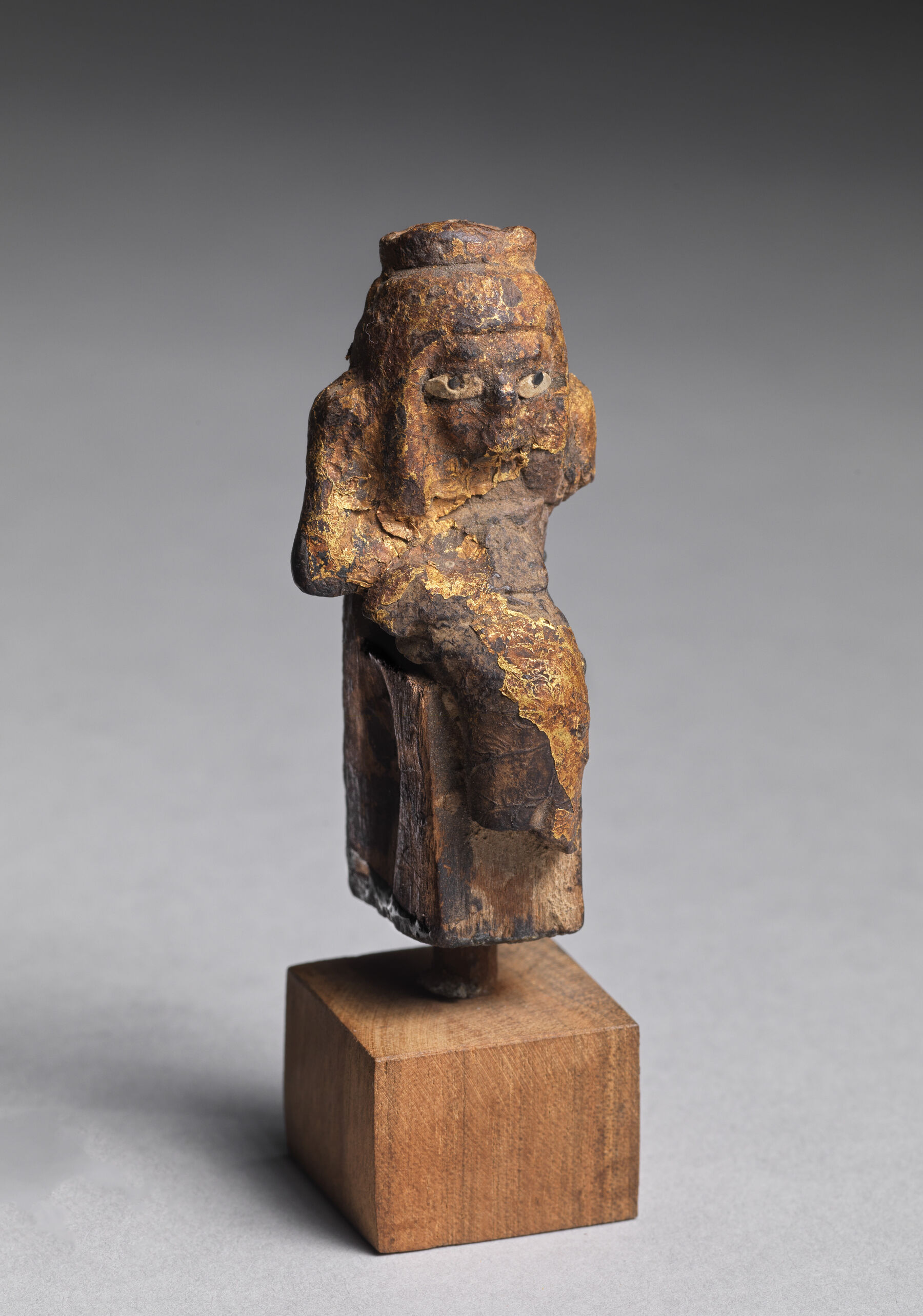This small figurine depicts Isis enthroned, suckling her son Horus whose figure no longer remains. Similar votive statues were deposited in Ptolemaic sites at Abydos, Tuna el-Gebel, and north of Zawyat Barmasha.1 Many statuettes were wrapped in linen to sanctify and safeguard them. The linen wrappings may also relate to Isis as the weaver of cloth.2
The statue’s squat proportions highlight the action of Isis nursing. Her huge head is sunk into her broad shoulders. Her long arms that once cradled Horus dominate her shortened lower torso. She wears a wig and a modius on her head. Her separately fashioned crown with uraei, two horns, and a disk is missing.
MH
-
Daressy, Georges. 1905-1906. Statues de divinités: Nos 38001-39384, 2 vols. Catalogue général des antiquités égyptiennes du Musée du Caire. Cairo: Imprimerie de l’Institut français d’archéologie orientale.; Bakry, Hassan S.K. 1973. “Ancient Egyptian Objects from Barmasha, Minya Governorate.” ASAE 61: 7–9.; BMA 37.1371E. ↩︎
-
Riggs, Christina. 2014. Unwrapping Ancient Egypt. London, New Delhi, New York, Sydney: Bloomsbury.. ↩︎
Bibliography
- Bakry 1973
- Bakry, Hassan S.K. 1973. “Ancient Egyptian Objects from Barmasha, Minya Governorate.” ASAE 61: 7–9.
- Daressy 1905-1906
- Daressy, Georges. 1905-1906. Statues de divinités: Nos 38001-39384, 2 vols. Catalogue général des antiquités égyptiennes du Musée du Caire. Cairo: Imprimerie de l’Institut français d’archéologie orientale.
- Riggs 2014
- Riggs, Christina. 2014. Unwrapping Ancient Egypt. London, New Delhi, New York, Sydney: Bloomsbury.
